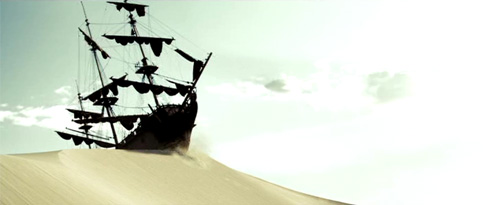Yet Another Reason I Can’t Stand John Updike
Friday, January 25th, 2013 • Writing

Reading Michael Tomasky’s new piece on Obama in the February 7 New York Review of Books, I noticed what I assumed to be a particularly good David Levine caricature of John Boehner—and then I suddenly remembered that Levine died (as far as I could remember) some time in the past five years. The Boehner drawing is by somebody named “Sparks” who was obviously chosen as a successor (in the classic Renaissance Guild method) since he or she can reproduce the famous Levine Rapidiograph-heavy style.
But I was curious about Levine’s death, so I looked him up on Wikipedia and found the usual wealth of information, including the fact that Jules Feiffer called him “the greatest caricaturist of the last half of the 20th Century.” (Feiffer may be too much of a snob to consider Mort Drucker.) Then, after a rundown of Levine’s artistic accomplishments and accolades, there are a series of quotations about him. Vanity Fair says:
“Levine put together a facebook of human history … the durability of those Levine depicted, plus the unique insight with which he drew them, guarantees the immortality of his works.”
Then the Times weighs in:
The New York Times described Levine’s illustrations as “macro-headed, somberly expressive, astringently probing and hardly ever flattering caricatures of intellectuals and athletes, politicians and potentates” that were “heavy in shadows cast by outsize noses on enormous, eccentrically shaped heads, and replete with exaggeratedly bad haircuts, 5 o’clock shadows, ill-conceived mustaches and other grooming foibles … to make the famous seem peculiar-looking in order to take them down a peg”. The paper commented: “His work was not only witty but serious, not only biting but deeply informed, and artful in a painterly sense as well as a literate one.”
And, finally, John Updike:
“Besides offering us the delight of recognition, his drawings comfort us, in an exacerbated and potentially desperate age, with the sense of a watching presence, an eye informed by an intelligence that has not panicked, a comic art ready to encapsulate the latest apparitions of publicity as well as those historical devils who haunt our unease. Levine is one of America’s assets. In a confusing time, he bears witness. In a shoddy time, he does good work.”
I mean, I ask you. Every Updike utterance (with the sole exception of his New Yorker art criticism, which was uncharacteristically restrained, like Cary Grant’s performance in Notorious) just drips with this predictable, overcooked lack of form and weakness of content. Updike’s writing is like a master-class in how not to do it: here, in 77 words, is the world’s most mundane point combined with an ignorant observation and delivered with that particular Updike combination of archness and feigned self-abnegation. (In other words, the issue isn’t really Levine; it’s the urgency of Updike’s dual self-description as both charmingly “confused” by his time and yet critically aware enough of its “shoddy” qualities to discern and admire the yeoman’s job Levine does.) Look at the other two quotes: they’re short, and they make sense. Updike takes twice as long to say less than half as much, if that. Who’s “panicking”? Why do Levine’s portraits of Martin Luther or William Blake have anything to do with “unease” or “haunting”? How is ours an “exacerbated” age? What the hell is he talking about, anyway?
I give the man credit for the stylistic advances of Rabbit Run (although he went back to that well way too many times). But everything he writes has this same leaden, circuitous quality. I’d love to be proven wrong (some people swear by The Centaur) but I’m not holding my breath.

